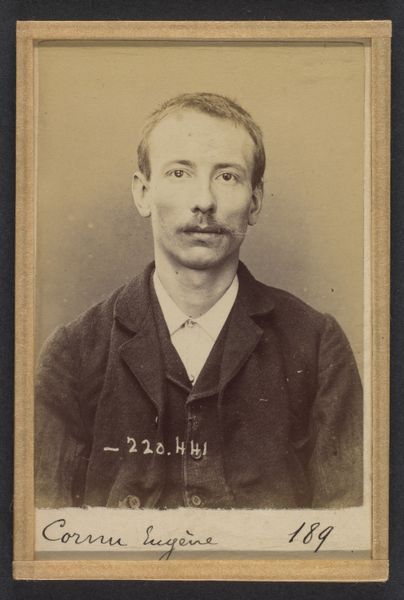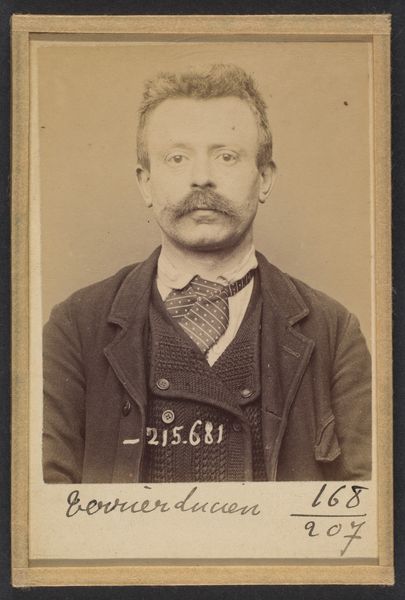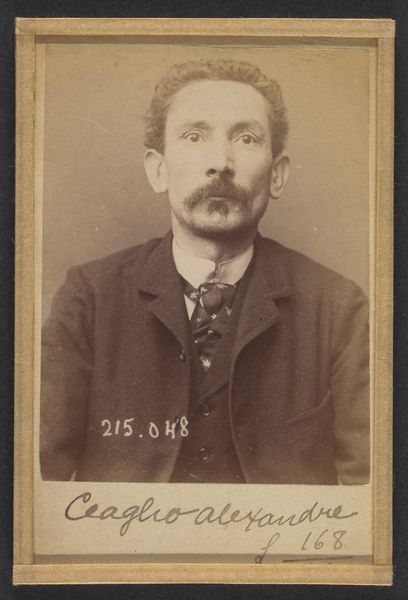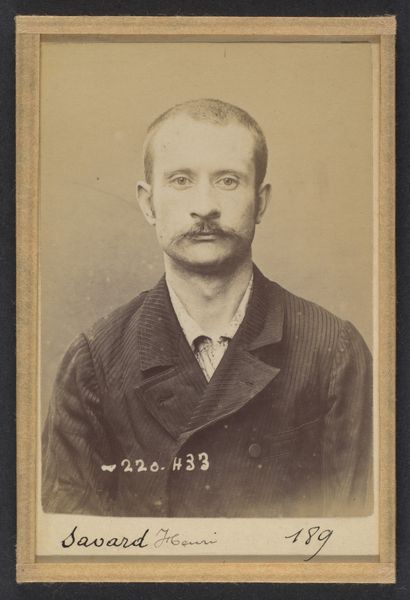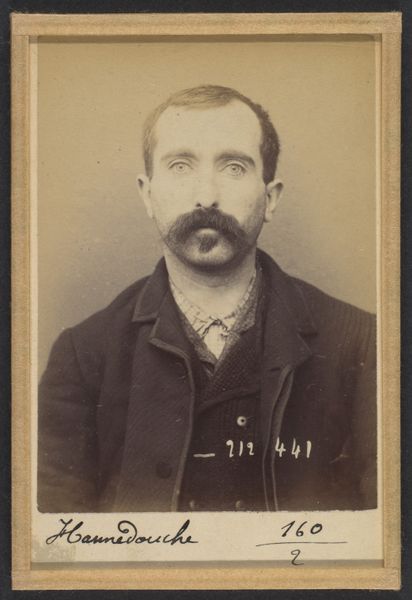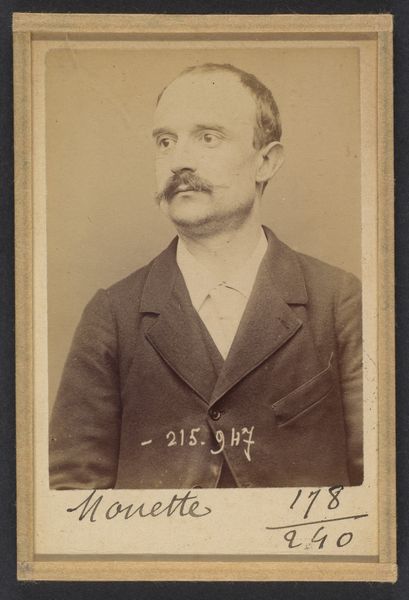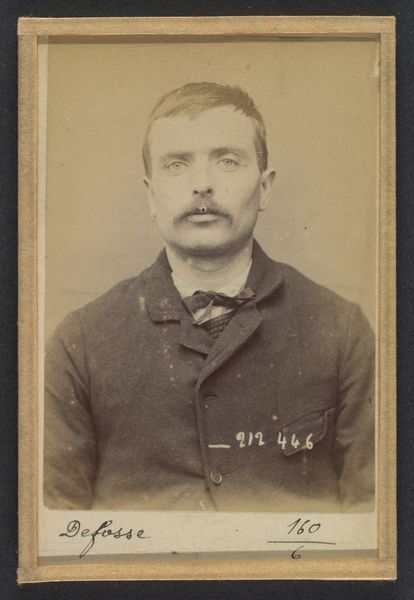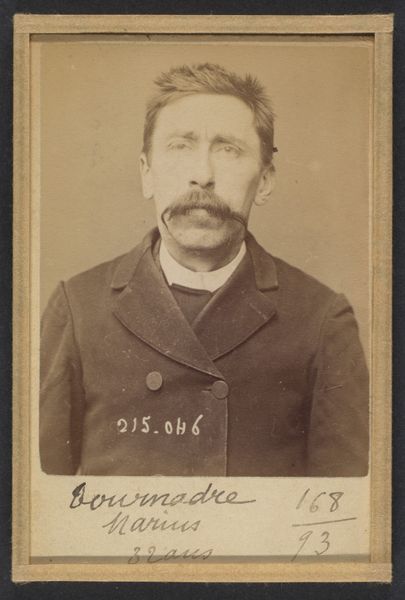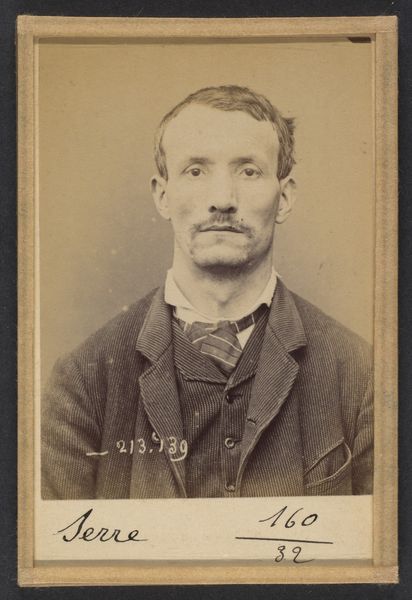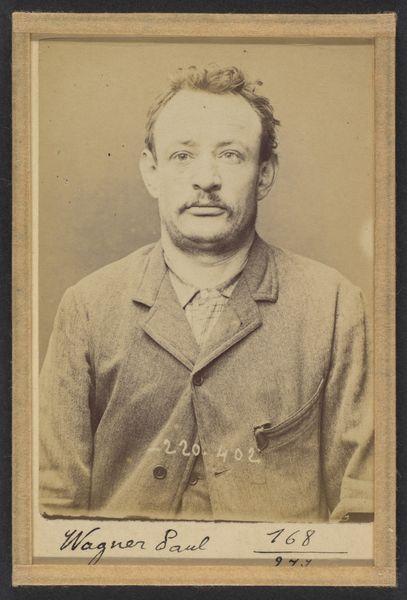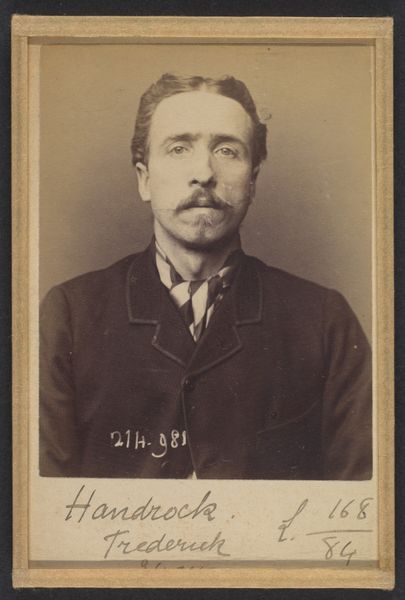
Tiran. Arthur, Théodore. 29 ans, né à Briec (Finistère). Serrurier. Anarchiste. 26/2/94. 1894
0:00
0:00
photography, albumen-print
#
portrait
#
16_19th-century
#
portrait
#
photography
#
albumen-print
#
realism
Dimensions: 10.5 x 7 x 0.5 cm (4 1/8 x 2 3/4 x 3/16 in.) each
Copyright: Public Domain
Curator: Well, the first thing that strikes me about this albumen print is how clinical it feels. There's an unsettling lack of affect, a certain disquiet that lingers in the air like a shadow. Editor: Agreed, there is something a bit spooky here, isn't there? It looks like a cross between a police mugshot and an old yearbook photo. Curator: Actually, you're not far off. This haunting image is part of a series of portraits created in 1894 by Alphonse Bertillon. Its title is "Tiran. Arthur, Théodore. 29 ans, né à Briec (Finistère). Serrurier. Anarchiste. 26/2/94" — the subject’s name, age, profession and association. Editor: Anarchist, wow! Did they really label photos like that back then? So, in essence, this isn't just a portrait; it's a document. An attempt to catalogue, classify, and perhaps even control an individual. It reminds me a little of those eerie daguerrotypes of psychiatric patients…a pseudo-science disguised as portraiture. Curator: Precisely. Bertillon was a pioneer of forensic science, famous for developing a system of anthropometry used to identify criminals. This photograph, displayed at the Metropolitan Museum of Art in New York, stands as an unsettling relic of a time when photography was harnessed for purposes that blurred the lines between art and social control. He believed these identifying “marks” offered insights into deviant personalities and behaviors. The "rational" taking over our view of a real human. Editor: This feels more than just rational; it is rather ominous. Seeing his face linked to this stark information, I am confronted with how quickly we simplify complex realities into flat descriptions. It gives you pause, doesn't it? To remember the world wasn't so black-and-white, then or now. Curator: I agree. This image serves as a potent reminder of photography’s power to both illuminate and distort, and its unsettling place in the history of social surveillance. Editor: Yes, food for thought. The history of control as much as a singular portrait.
Comments
No comments
Be the first to comment and join the conversation on the ultimate creative platform.
